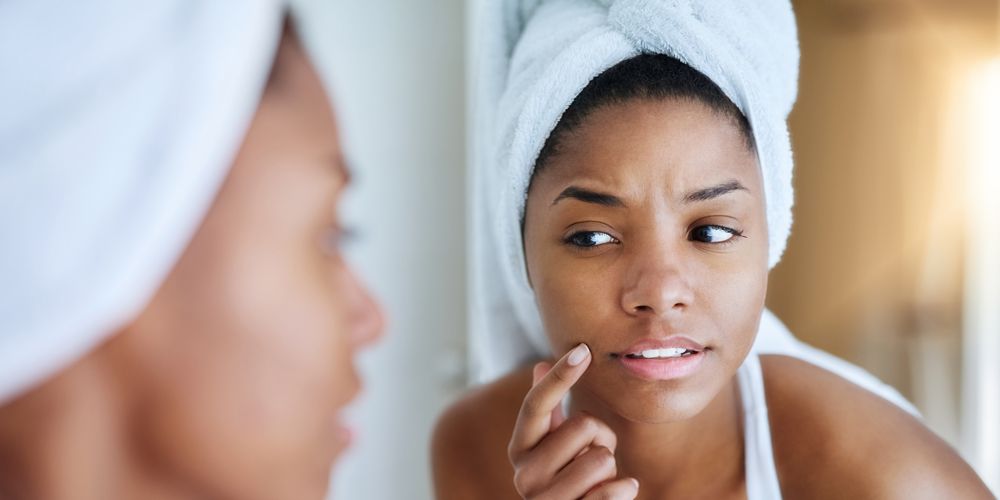Acne

Podcast Episodes
State of Acne Management: Stud or Dud?
Do not pop, rather pick a therapeutic strategy from the wide array of new….oh wait, nevermind. The world of acne treatment R&D is unfortunately shrinking as payors pick away at the medical necessity of managing the most common inflammatory skin disease. Like Marty McFly fading in that famous family photo, the spotlight on acne is shifting, enough to make Dr. Pimple Punisher Dr. Hilary Baldwin pick up a bottle of Prozac. But all hope is not lost.
Join JDD Podcast host Dr. Adam Friedman as he and Dr. Baldwin scour the therapeutic landscape and take a sharp left into the over the counter space to review accessible options to manage both the today and tomorrow of Acne Vulgaris, the symbiosis between RX and OTC to address barrier dysfunction, scarring and hyperpigmentation.
Sponsored
Editorials
Acne Information on Instagram: Quality of Content and the Role of Dermatologists on Social Media
While it is evident that many patients turn to social media for information about skin care, the quality and content of available information are not well characterized. In this study, we investigated acne-related information available on Instagram, one of the most popular social media platforms. We searched for the “top” Instagram posts using the hashtag #acne and characterized them based on their source and content. Posts were excluded if they were unrelated, not in English, or duplicates. 900 posts were assessed, and 439 were included. A majority of the content (258 posts) was generated by influencers, followed by retailers (97) and non-dermatologist providers (67). Dermatologists were responsible for 17 posts, accounting for <4% of the included content. 124 separate ingredients were mentioned as potential acne treatments. The ingredients with the most mention were beta-hydroxy acids (eg, salicylic acid), alpha-hydroxy acids (eg, glycolic acid), vitamin C, niacinamide, and sunscreen. 254 posts recommended at least one specific intervention, and among these posts only 11% referenced a treatment with grade A evidence based on American Academy of Dermatology guidelines. A vast amount of content is readily available to patients on this platform. This content is heterogeneous in message and quality, and dermatologists are responsible for only a small portion of it.
Case Reports
Microneedling for Treatment of Acne Scars: Considerations on the Successful Management of This Aesthetic Procedure
Microneedling is a minimally invasive procedure for treating acne scars which has already been well-established, but it has been reborn in recent years because of innovative findings. It presents many advantages in comparison with other techniques more frequently used such as laser resurfacing and deep chemical peelings; in particular, it consents to achieve good or excellent results with a minimal time (2-3 days) of recovery and rare complications, even in dark phototypes.1,2
Articles
Skin Barrier Benefits of a Natural Moisturizing Factor and Lipid-Based Moisturizer for Clinically Sensitive Skin
Sponsored
Early Acne Improvements With Fixed-Combination Topical Therapy: Analysis of the First 4 Weeks of Treatment
Acne treatment can take weeks to deliver noticeable improvements, which may diminish patients’ perception of treatment effectiveness and undermine treatment adherence. Combination topical treatments that target multiple acne pathophysiological pathways are more efficacious than topical monotherapies, and simplifying combination treatment by delivering multiple active ingredients as fixed combinations may improve adherence.
Application Characteristics and Patient Preference of Triple-Combination vs Layered Topicals for Acne: Split-Face Study
Although triple-combination therapies for acne are generally more efficacious than dual-combinations or topical monotherapy, this benefit may be offset by reduced adherence to a complicated treatment regimen. Clindamycin phosphate 1.2%/adapalene 0.15%/benzoyl peroxide 3.1% (CAB; Cabtreo®, Ortho Dermatologics) gel is the first triple-combination topical approved for the treatment of acne. By delivering multiple active ingredients as a fixed-dose combination, CAB gel may improve ease of use, which can benefit both treatment adherence and efficacy. The objective of this study was to compare the application characteristics of CAB gel with the layered application of its 3 individual active ingredients.
Supplements
Acneceuticals maximized therapeutic outcomes in a real-world setting
Acne is the most common cutaneous disease worldwide and the most frequent disorder to present to the dermatology practice. Although efficacious treatments exist, clinicians continue to search for better regimens with improved safety for our patients.
Topical Acne Treatment: What’s Behind the Scenes in 2024
Optimal topical acne treatments should ideally target multiple pathways involved in acne development.2 Traditional treatments, though often effective, may come with limitations such as skin irritation, dryness, or other adverse effects. Thus, the pursuit of optimal topical acne treatments is critical to enhancing efficacy, minimizing side effects, and improving patient adherence and satisfaction.
Advancements in Topical Combination Products for Acne Treatment
Antibiotic resistance and treatment adherence remain significant challenges for acne treatment. Advances in topical formulations have ushered in an era of fixed combination topical therapeutics that are well-tolerated and more efficacious. In addition, their once-daily application leads to increased treatment adherence. This article discusses formulation strategies that allow for the coadministration of active drugs and reviews all commercially available fixed-combination topical acne treatments.
Tretinoin Formulation: From Microsponges to Polymeric Emulsion
The history of tretinoin and its use in dermatology is a testament both to the drug’s well-established efficacy and its potential to cause skin irritation. Over more than four decades, the drug that launched the retinoid class into the market has been used in the topical management of acne, either alone or in combination.






